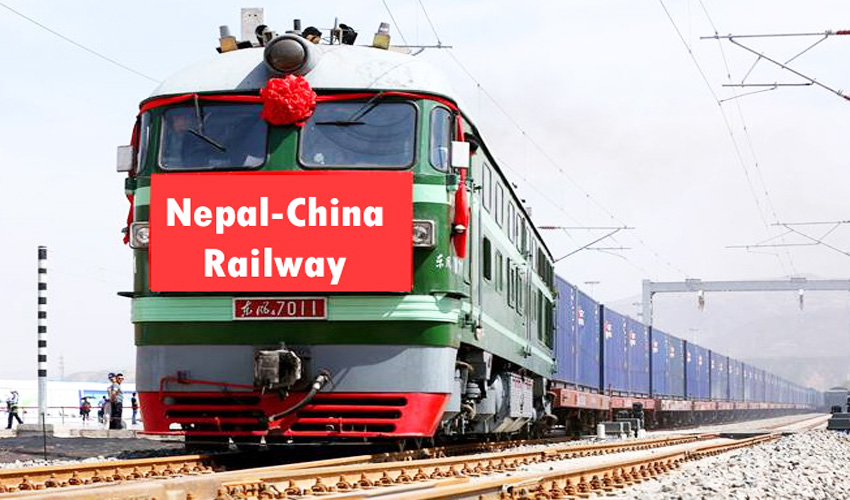
Mohan Singh
The Belt and Road Initiative (BRI) or better known as ‘One Belt, One Road’ (OBOR) project, was first announced by Chinese President Xi Jinping in 2013. China’s urge to make geo-political linkages with the rest of the world through infrastructure, investment and trade is the driving force behind this transnational mega economic framework. Really speaking, the key impetus of BRI is to attain the supremacy of China as the fast-emerging superpower. It should be advised with a criterion that if there is no hidden agenda at work, BRI could play a transformational role viz-a-viz participating countries through political, economic and cultural exchanges. However, the chequered and unstable history of Chinese economic transactions has shed a protracted doubt and concern over BRI’s eventual goal and objective. From the geostrategic standpoint and geopolitical perspective, China’s connectivity development is perceived to be an extension of pursuit for global hegemony and disproportionate tactical influence.

One such litigious BRI project amidst this long list is the proposed railway link between China and Nepal. The railway line is visualized to provide an all-weather connectivity between Kathmandu and Shigatse, a city of the Tibet Autonomous Region the People’s Republic of China, crossing China–Nepal border at Gyirong–Rasuwa. Top speed of the train set is however limited to maximum 75 mile/hour (around 120km/h) because of design constraints stemming from altitude perturbation and perfidious Himalayan topography. Cutting across dry and barren Tibetan Plateau, the project is slated to become the world’s highest rail road, another marvelous endeavor after first of its kind Qinghai-Tibet railway servicing the region. However, not all seems hunky-dory as various pitfalls and controversies surround this beleaguered project, primarily those concerning passenger safety, technological challenges, ecological degradation, topicality and economic viability.
Significantly, circumventing natural hazards in the catchment area of the active Himalayan fold mountains and navigating practical issues like debt-trap have further diminished the practicability and feasibility of this megalithic Railway ecosystem. Though the Chinese government has time and again enlisted several benefits in favour of the said project viz. incremental growth in trade and tourism, ease of mobility, safe economic travel, multi-billion dollar investment but still the cons far overshadow the pros and are considerably more devastating and debilitating.
The gravest and the most momentous jeopardy associated with Tibet -Nepal Rail link is probability of falling into debt-trap. Debt-trap diplomacy is a theory to describe plotting of powerful lending countries or international institutions in the hunt for saddling the burden on the borrowing nation with enormous debt upfront, so as to amplify its leverage and control. Chinese shenanigans, time and again have deployed such diplomatic apparatus and instruments in correlation with other small developing countries to gear up their vested interests. The most distinctive example is the Sri Lankan port of Hambantota. In this case, China pushed Sri Lanka into borrowing money at exorbitant rates from Chinese banks to finance project which had no prospect of commercial success whatsoever. Oppressive terms of operation and feeble revenues from the stressed project eventually pushed Sri Lanka into debt trap. Unable to service debt obligations, China demanded rights on port ownership as collateral, compelling Sri Lankan government to surrender the control over the port in favour of a Chinese firm for 99 years. This is the blatant debt-trap. Hence, Sri Lankan example should be taken as a cautionary and instructive anecdote for what might be in store of a fragile economy like that of Nepal.
Some other derogatory glimpses into the double-crossing world of debt trap would be the Maldives and Montenegro. In the case of the Maldives, China had provided a debt of $1.4 billion which makes the Maldives owe 78% of its external debt to China. The Maldives is also one of eight countries at meticulous high risk due to continued Chinese lending, as stated in a report by the Center for Global Development (CGD).
However, in case of Montenegro, China had surreptitiously included controversial clauses in bilateral agreement, directly contradicting the oft-marketed benevolent nature of BRI. China loaned Montenegro €800 million to build a highway but one of the key provisions under the bilateral agreement states that ‘if Montenegro were to default on repayment, China would as guarantee receive the right to access of Montenegrin land’ – directly alluding an approach of grabbing hold of assets through financial deception and dishonesty. Hence, China’s ‘debt trap diplomacy’ is not a figment and fabrication of imagination but a callous reality!
To be concise, China’s debt trap policy mostly involves loading poor countries with debt, refusing to renegotiate oppressive and unfair terms and conditions and then when the credulous partner defaults, taking control of key infrastructure assets. By deploying such scathing and caustic diplomatic maneuvers, China’s BRI has lapped up several untenable and unsustainable debt-for-infrastructure deals, which nevertheless are means to strengthen China’s geopolitical advantages and geostrategic interests. The proposed Nepal-Tibet railway that will link Kerung city in southern Tibet to Nepal’s capital Kathmandu, entering the country in Rasuwa district and eventually going on to India has all the markers and red flags of Chinese debt trap paradigm which shows its ill-intention!
Notably, locals have raised concerns about this mammoth project which will entail large scale land acquisition besides being laden with multiple socio-economic pitfalls and potential drawbacks. Locals have dubbed the project as ‘kagaj ko rail’ (literal meaning is paper railway) and ‘sapana ko rail’ (dream railway), highlighting the dark underbelly of this mordant project. In addition to local displeasure, tough and unsafe landscape, nonsensically high construction costs, large scale displacement and disruption of natural habitat, unviable cash flow projections, restrictive terms and conditions etc. have only manifested diabolical nature of the said project. One prominent analysis report has enlisted ‘six extremes’ with regard to this project including topography, weather, hydrology and tectonics that will make the project enormously challenging. Moreover, railway systems world over are proven sunk costs, demanding massive capital investments right at the beginning together with distressing high annual maintenance and operational costs for rolling stock as well as fixed assets. Due to these chronic difficulties and unreasonably low rate of returns (~2-4%) on public funds, railway projects worldwide are planned judiciously over extended gestation periods, appropriately factoring in technological upgrading costs and finances required for sustaining risk free operations. For this clear-cut reason, experimenting with big ticket wasteful and excessive railway projects is mostly carried out by advanced economies with proven localization and incubation of complex railway technology. Sorrowfully, in the context of this rail link, the critical factor which further compounds the absence of viability is lack of ‘heavy haul cargo operations’, stronghold of any productive and viable railway network. Bulk freight operation is technically untenable and unsustainable in this high gradient hazardous hill topography owing to challenges of traction power, rolling stock and interlocking.
Additionally, environmental and biodiversity issues also plague the said Nepal-China railway link because its association exceeds through two ecologically fragile and frail national parks – Langtang and Shivapuri. Langtang boasts of endangered and vulnerable species like red panda and snow leopard, while Shivapuri – on the northern side of Kathmandu – is home to over 300 bird species and one third of the country’s total birds. Moreover, probable growth of unlawful wildlife smuggling along railway route is another major challenge. Yet as economic, political and technical issues overlook railway discussions, deploying environmental impact assessment (EIA) models for a more nuanced approval of ecological factors is still not in the scheme of calculation.
The total length of rail line is expected to be 136 kilometres, out of which 42 kilometres will pass through a tunnel. The project is expected to cost humongous three trillion Nepali rupees and a major part will be funded through long term debt. Investing such inflated dejected capital in high risk hazardous civil engineering experiment with no proven viability or serviceability is a sure recipe and sightless guideline for disaster for nascent economies like Nepal. For Nepal to justly benefit from synergy of BRI framework, big ticket projects like this rail link needs to be comprehensively evaluated with realistic cash flow projections and passenger turnout assessment, besides considering possible socio-economic-ecological flash points. Nepali leaders should step with maximum caution in this dangerous and precarious realm of technological intensive mega projects as exploration of right public funding models is a major issue more so when the country is overwhelmed with competing demands of sustainable human development.
































